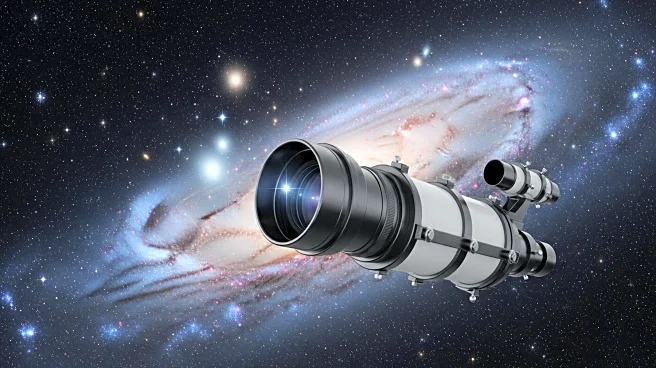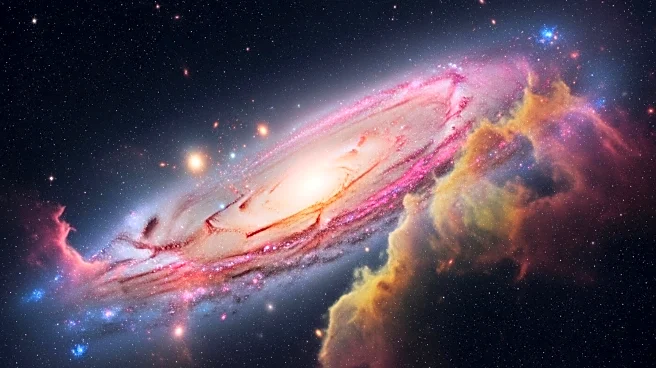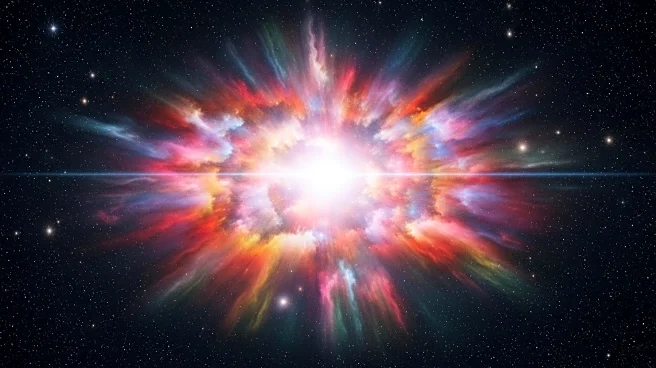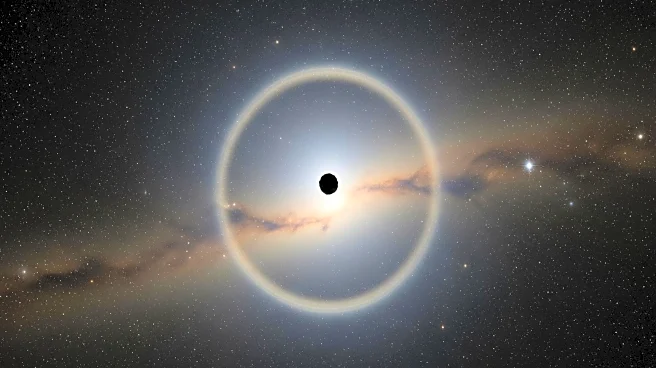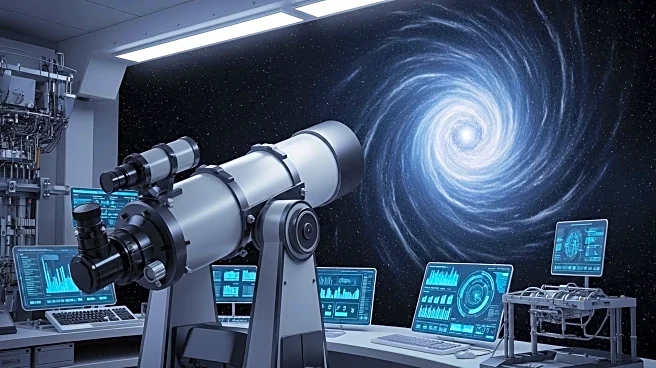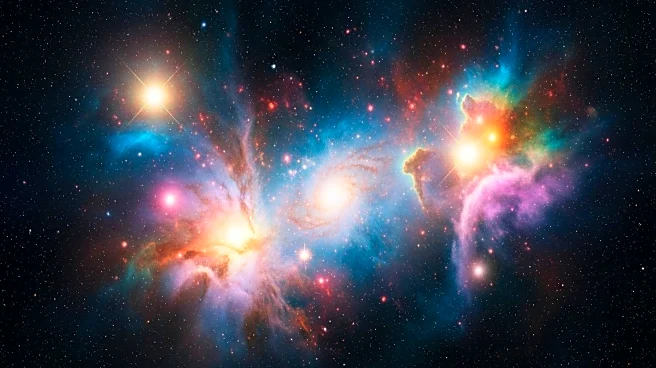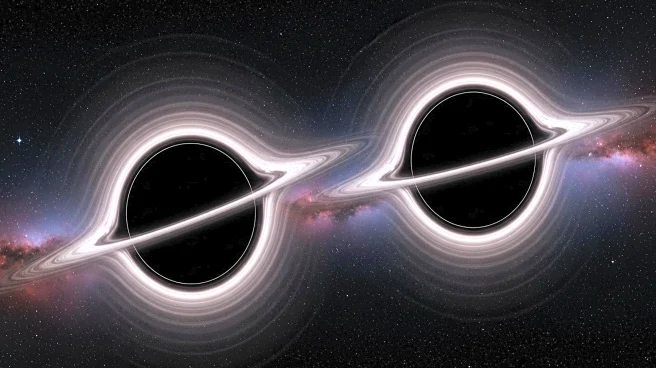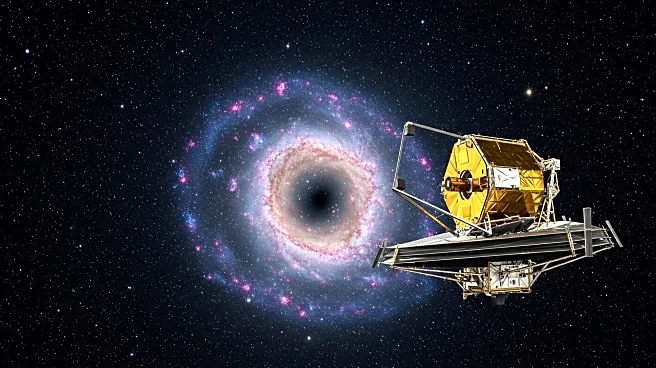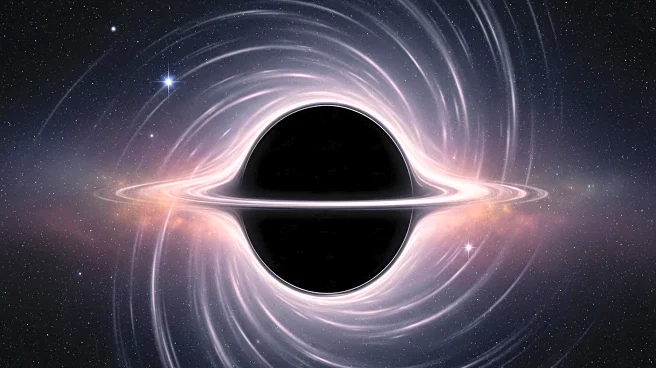What's Happening?
A physicist from the University of Ottawa, Rajendra Gupta, has introduced a new theory that challenges the long-standing belief in dark matter and dark energy as fundamental components of the universe. Gupta suggests that the cosmic phenomena typically attributed to these mysterious entities can be explained by the gradual weakening of the universe's fundamental forces over time. This theory proposes a unifying equation that links two major sets of astronomical observations, traditionally explained by dark matter and dark energy, under a single framework. Gupta's model suggests that variations in a parameter reflecting the evolving strength of nature's fundamental forces can account for the gravitational effects observed in galaxies, without the need for dark matter.
Why It's Important?
This new theory could significantly alter the current understanding of cosmology, which has been largely based on the existence of dark matter and dark energy. If Gupta's model holds true, it could simplify the explanation of cosmic phenomena and eliminate the need for unknown particles. This would have profound implications for theoretical physics and could redirect the focus of experimental searches in cosmology. The theory also offers a revised timeline for the universe, potentially resolving discrepancies in the formation of galaxies and supermassive black holes. This could lead to a paradigm shift in how scientists approach the study of the universe's expansion and structure.
What's Next?
The scientific community is likely to scrutinize Gupta's theory through further research and experimentation. If validated, this model could lead to a reevaluation of the assumptions underlying contemporary cosmology. Researchers may focus on testing the implications of the weakening of fundamental forces and its impact on cosmic evolution. This could also influence future observational strategies and the development of new theoretical models in astrophysics.
Beyond the Headlines
Gupta's theory challenges the conceptual framework that has guided cosmological research for decades. It raises questions about the nature of the universe and the validity of existing models that rely on dark matter and dark energy. This development could inspire new lines of inquiry into the fundamental forces of nature and their role in shaping the cosmos. It also highlights the dynamic nature of scientific understanding and the potential for revolutionary ideas to reshape established paradigms.


